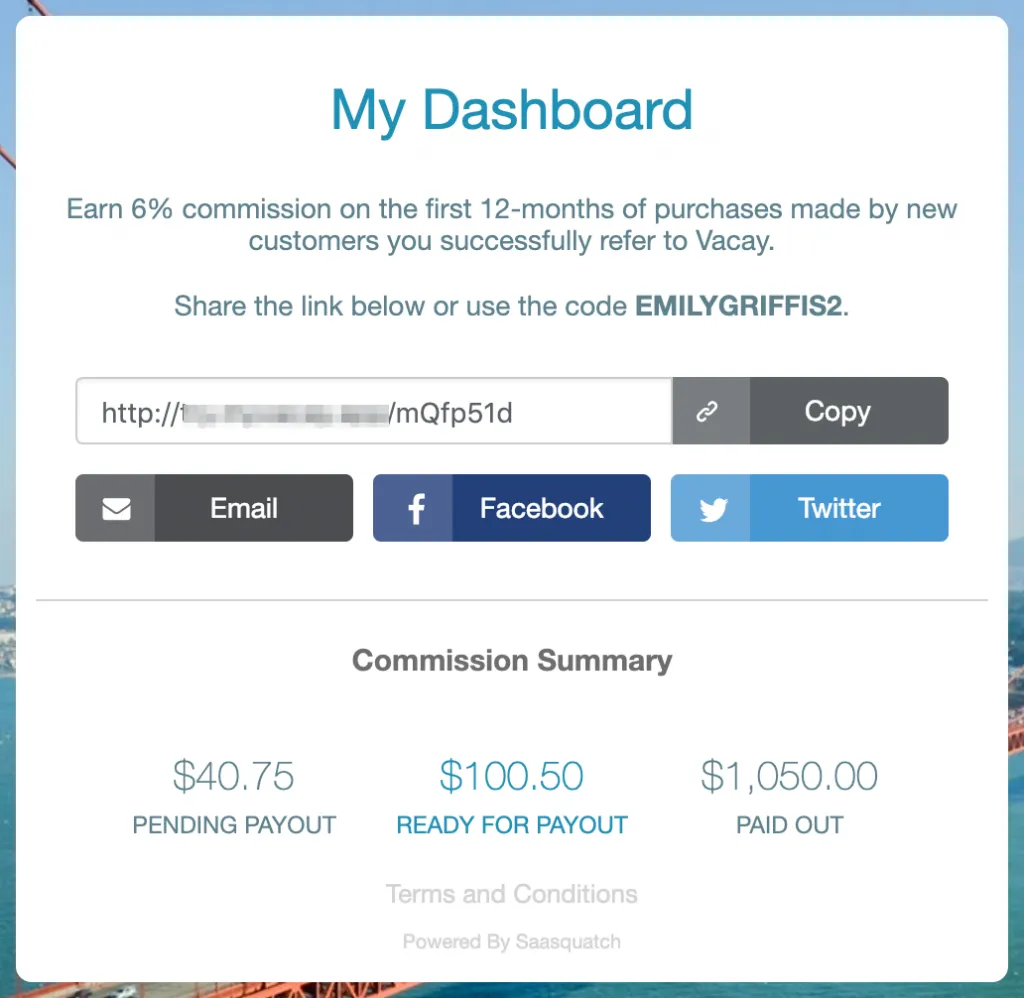An Introduction to Affiliate Programs
Affiliate Programs
Imagine you own a product review website and generate revenue through banner ads and sponsorships.
What if, by simply adding special links to the content already on your page, you could increase your yearly revenue by over $50,000?
Enter affiliate marketing.
On the rise since the inception of the internet, affiliate marketing involves third-party advocates promoting a company’s products in exchange for a commission of every sale that they facilitate.
For website owners, it’s a way to make passive income.
For your business, it’s a way to generate new leads, reach new markets, boost sales, and ensure your marketing budget isn’t wasted.
Keep reading to learn how an affiliate program can help grow your business, or jump to a section to learn more:
- What is an affiliate program?
- Affiliate VS Influencer VS Partner Program
- Pros and Cons of an affiliate program
- Tips for launching an affiliate program for your brand
What is an affiliate program?
An affiliate program is a form of performance-based marketing.
As a business, you reward “affiliate partners” to promote your products. Affiliates are typically paid on a commission basis, receiving a defined percentage of every sale that they generate.
It’s most popular with B2C companies, whose products have a high enough margin to be able to include a middleman in the acquisition process.
These programs can be highly effective in driving traffic and sales. With the right partner, you can quickly scale up your customer base without having to invest money into advertisements or other forms of paid marketing.
Plus, as a business owner, you don’t have to worry about managing a team of people or dealing with any legal issues that come with employing a sales force.
How does it work?
The affiliate, such as the owner of a popular blog, applies to be part of your program. Once approved, the blogger (for example) mentions your product in an article, and includes a special link that takes users to your website where they can make a purchase (or other action).
The specific link lets you measure traffic or conversions from their audience and reward the affiliate accordingly.
Affiliates are typically rewarded based on the sales or revenue they generate (ie. revenue sharing), but can also be compensated for generating leads, clicks, form fills, or any other trackable metric.
It’s broadly recognized as a way for owners of blogs, review sites, and other sites with significant web traffic to make passive income.
Think of affiliates as an extension of your marketing team – they know how to drive web traffic with SEO strategies, and engage their audience through channels like email and social media. They have access to audiences that you may have difficulty reaching on your own.
It’s a win-win – the affiliate gets paid for their efforts and you get more exposure and sales.
The key to success is making sure your affiliates have good incentives, such as exclusive discounts, freebies, and other rewards. Also make sure that they’re well informed about your products or services so that they know how to market them effectively.
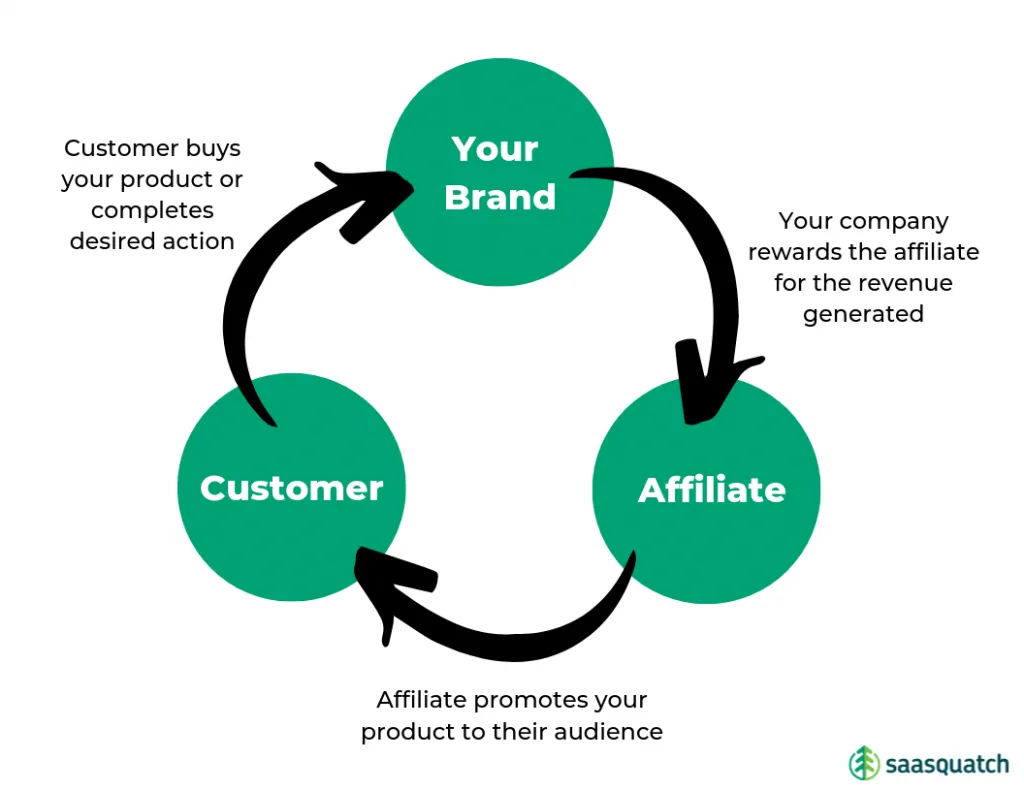
Affiliate programs in action
Step 1: Affiliate applies to join your program
Here’s an example from the Amazon Associates affiliate program:
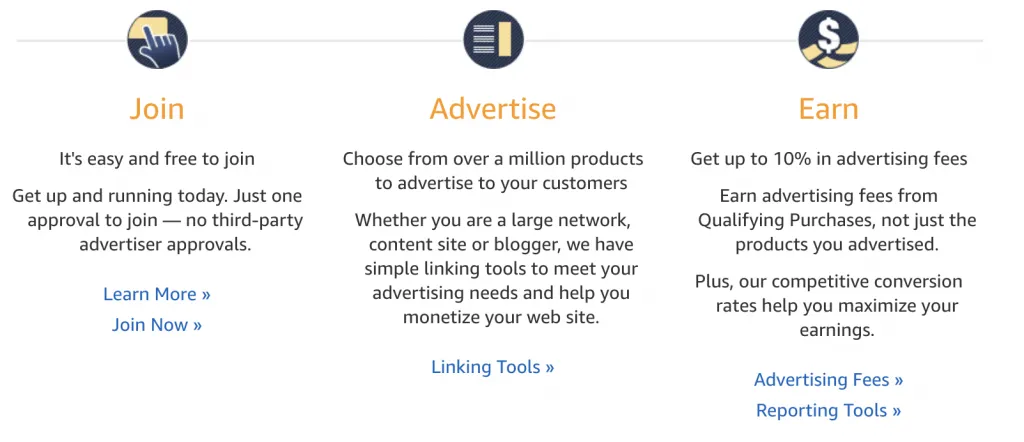
Once approved, Affiliates can access their own unique link to your website. It’s this link that will earn them commission each time a purchase is made through it.
Step 2: Affiliate places unique links on their website
Here’s an example from an adventure cats website promoting supplies you need when taking your cat for an adventure.

You’ve probably come across a blog stating that the “post may contain affiliate links”. Many affiliates will disclose this on their websites (and may be required by law to do so) so that readers don’t feel like they’re getting scammed into financially supporting the affiliate.
Affiliates are in control of where they place their links and how they promote them. They can upload banner ads to their website, post it on their blogs or share their link through various social media channels like Facebook and Twitter.
Step 3: Affiliate gets rewarded for successful conversions
When a customer clicks on your affiliate’s link and makes a purchase, they will get commission. This commission can vary depending on the product or service you offer. The more successful conversions, the more an Affiliate earns.
Affiliate VS Influencer VS Partner Programs
You’re probably wondering, how is an affiliate program different from influencer and partner programs?
This is understandable given that the term “affiliate” is often used to describe any kind of third-party referral program.
While all three of these programs share the concept of pairing up with an external brand advocate to help sell on your behalf, we can start to distinguish them by answering two questions about the business-referrer relationship:
- How closely does the business work with the third-party?
- Is the third-party an individual entity or a company?
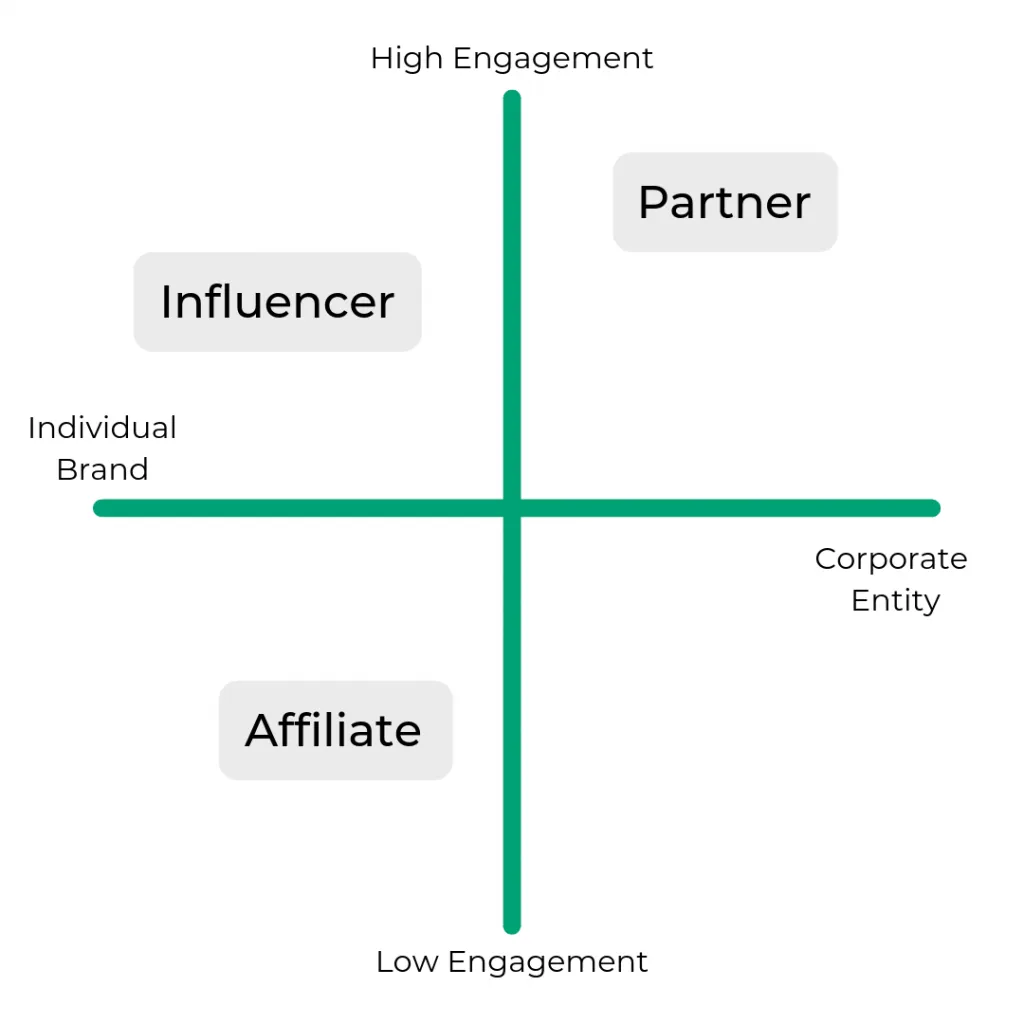
When compared to influencer and partner programs, affiliate programs have the lowest level of engagement between the third-party and the brand.
While the brand should still provide the affiliate with necessary collateral and materials to market their product effectively, the relationship is not monitored as closely as it would be with an influencer or partner.
Affiliates are typically independent entities that sign up for a program and begin promoting the brand almost immediately. On the other hand, influencer programs involve a much closer relationship between the business and third-party. Businesses will often establish an agreement with a particular individual or group of influencers to promote their product in exchange for compensation. In many cases, the influencers are not just compensated with money but also receive free products or services.
Lastly, partner programs involve an even greater level of collaboration between the business and third-party. Partner programs are often used to establish relationships between businesses that offer complimentary products in order to create more value for their respective customers.
Stay tuned for a more in-depth comparison of all three programs coming soon to our blog.
How is an affiliate program different from an influencer program?
There is no doubt a degree of overlap between influencer and affiliate programs – many influencers (ie. social media personalities) are affiliates, but not all affiliates are influencers.
While just about anyone can apply to be an affiliate for your brand, influencer marketing is a much more targeted and customized approach.
With an influencer program, your brand works closely with the selected influencer to design content and messaging that matches their unique voice. Influencers may include affiliate links in their posts, but the planning process is much more strategic than simply inserting a link somewhere on their website.
On the other hand, when an affiliate includes a link to your product on their website, they’re likely not exclusively focused on promoting YOUR brand. There may be 20 other affiliate links on the same page, supporting a variety of other companies.
While these two strategies can work well together, choosing between influencers or affiliates largely depends on who your target audience is, where they spend the most time, and what budget you have to spend.
Influencers can demand a higher price tag, and are largely successful in promoting brand awareness in addition to driving customer adoption. Affiliates can be cheaper to manage and are mainly conversion-focused.
Ultimately, it’s important to understand the differences between an affiliate and influencer program before deciding which one is best for your brand. With a clear understanding of each channel’s strengths and weaknesses, you can choose the program that will bring you the best return on investment.
How is an affiliate program different from a partner program?
Affiliate programs are basically partner program open to the broader public. Instead of your business recruiting a network of official partners to sell on your behalf, affiliates will come to you and apply to join your program.
While an affiliate is technically the “partner” of a business, the relationship is much different than a true “partner program”.
Your partners are often trained salespeople from businesses with whom you have a high level of trust to represent your brand well. This is often leveraged in the B2B industry where the buying process is longer and involves multiple decision-makers.
Affiliate programs are typically used in B2C industries where the buying process takes no more than a few clicks and approval from only one stakeholder – the consumer.
In short, this program is broad and opens up the opportunity to partner with more people than just those in your “inner circle” and can drive more business faster. It’s perfect for businesses looking for quick wins.
However, if you prefer cultivating closer relationships with fewer partners, then a partner program might be the better option. It all depends on your business objectives and how you want to engage with partners. Ultimately, it’s up to you! If you’re looking for a mix of both, then choosing an affiliate network that offers partner programs can be an ideal solution.
Pros and cons of launching an affiliate program
Benefits of an affiliate program
• Only pay for the revenue generated: You only pay the affiliate for the conversions that they generate, and nothing else. This means affiliates are more motivated to drive your preferred customer actions, and you aren’t wasting money on ads that might not convert.
• Reach new markets: With the massive array of websites on the internet, it’s almost a guarantee that you can find relevant sites that you can partner with as extensions of your target market.
• Acquire more, high-value customers: Forty percent (40%) of US retailers cite affiliate programs as their best customer acquisition channel. Customers who made their first purchase through the recommendation of an affiliate in 2016 led to a 21% higher average order value, and 58% higher average customer revenue. (source)
• Engage your top customers: Existing customers can be your best affiliates. They’ve shown interest in your brand, understand your value proposition, and will be excited at the opportunity to support you and make money at the same time. External Resource: Converting Customers to Affiliates
• Increase sales: Since 2015, revenue from affiliate marketing programs has grown by 10% year over year. In fact, 16% of all online orders are now attributed to affiliate marketing – this is the same impact as email marketing, and a larger impact than social commerce and display advertising.
Cons/risks of an affiliate program
• Misrepresentation of your brand: While the right affiliate can significantly boost your reputation, there’s still potential for misrepresentation because the relationship is not as closely monitored. Mitigate this with clear terms and conditions, and a thorough screening process.
• Affiliates prioritize profit over fit: Because many affiliates join your program with the goal of making money, they’ll be inclined to share your brand with as many people as possible. This has the potential to weaken your message or bring in customers who aren’t a good long-term fit.
Like Autopilot, many brands mitigate this by requiring affiliates to be a paying subscriber who truly find value in the product and can attract like-minded users:
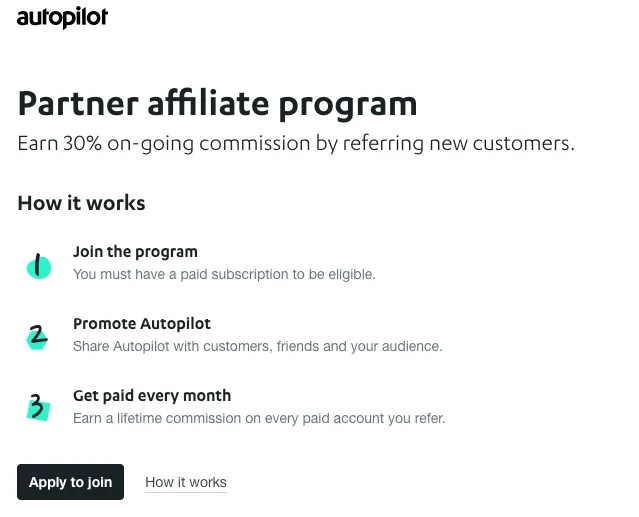
• Risk of scam: It’s no secret that shady activity takes place on the internet, and people find ways to cheat the system. This can easily be mitigated with the right amount of affiliate screening, terms and conditions, and tracking software equipped with fraud prevention.
Tips for designing an affiliate program
1 – Make your application form easy to find
The only way you’ll reap the benefits of an affiliate program is if you attract the right affiliates. Just like with any marketing initiative, no one will participate if they don’t know it exists.
While the goal of an affiliate program is to have prospects come to you instead of having to recruit everyone yourself, to get off the ground and gain traction, consider reaching out to potential affiliates (ie. your best customers) to join and provide you with feedback in exchange for an extra incentive.
Standard promotional techniques include having an explainer page on your website, links in the website navigation, CTAs in newsletters, emails, and social media posts.
A great example of affiliate program promotion is from Designmodo – a popular design blog selling web UI kits, icons and graphics. Clear CTAs to “Become an Affiliate” are sprinkled throughout relevant website content, taking users to a page that clearly explains the benefits of becoming an affiliate.

To get a clear picture of expected revenue, users can use the interactive calculator to specify how many of what item they can sell in a given amount of time. The yearly income total will adjust to show them the impact, taking out the guesswork as to whether becoming an affiliate is worthwhile.
Designmodo’s example shows that when it comes to promoting your program, clarity and convenience are key. Make sure your application form is easy to find and clearly communicates the benefits of joining the program. Then, use a combination of offline and online promotion methods to get the word out.
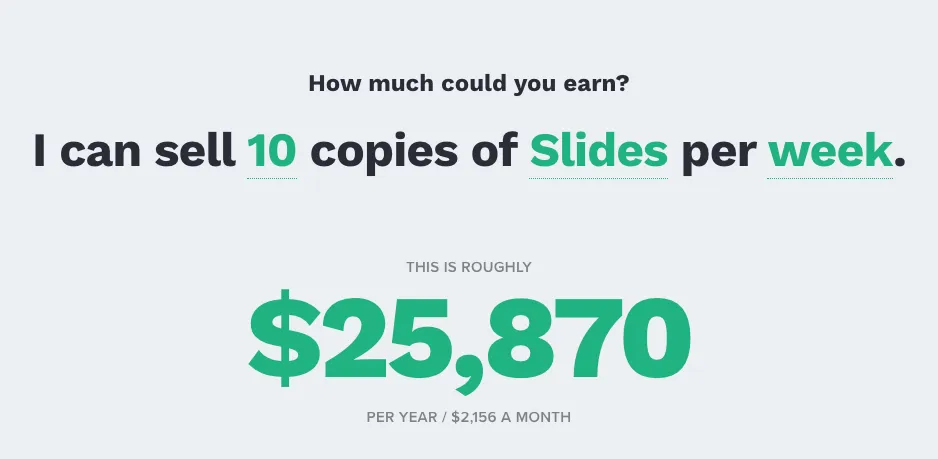
Another notable example: Canva (https://about.canva.com/affiliates/)
2 – Track progress with automated software
While the concept of an affiliate program is rather simple, to run and scale it effectively, you need a way to:
- Let affiliates apply/register
- Generate unique links for every affiliate
- Track the success and conversions of each link
- Payout affiliates for the right amount
- Detect and manage fraudulent activity
Keeping affiliates happy means accurately tracking and paying them for the revenue that they generate based on your agreed-upon terms. Having access to realtime data and analytics means you can make iterations as needed without re-writing any code.
Automated software can also monitor affiliate links for fraud, which helps you maintain the integrity of your program. As your program grows, so does your responsibility to comply with industry regulations and consumer protection laws.
Automated software can help you stay on top of those standards while still delivering the compensation that affiliates deserve. Doing it all manually would be a tedious and time-consuming process, but automated software can make it easy and efficient.
In the end, you’ll save time and money while keeping your affiliates happy.
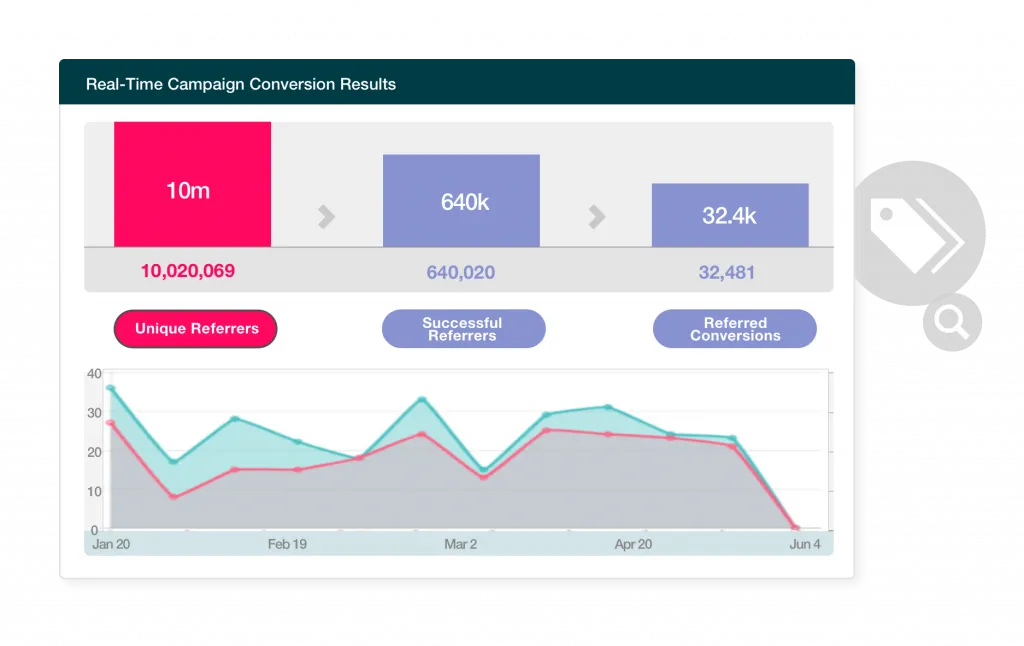
3 – Don’t accept just any affiliate
Customers are going to create a mental link between your brand and the affiliate’s reputation, so be careful who you associate yourself with.
This means creating a screening and application process that helps you get a clear idea of how, where, and why an affiliate will be promoting your brand.
For example, HubSpot’s affiliate application form inquires about the affiliate’s marketable audience size, where they will promote the links, and why they are interested in joining.
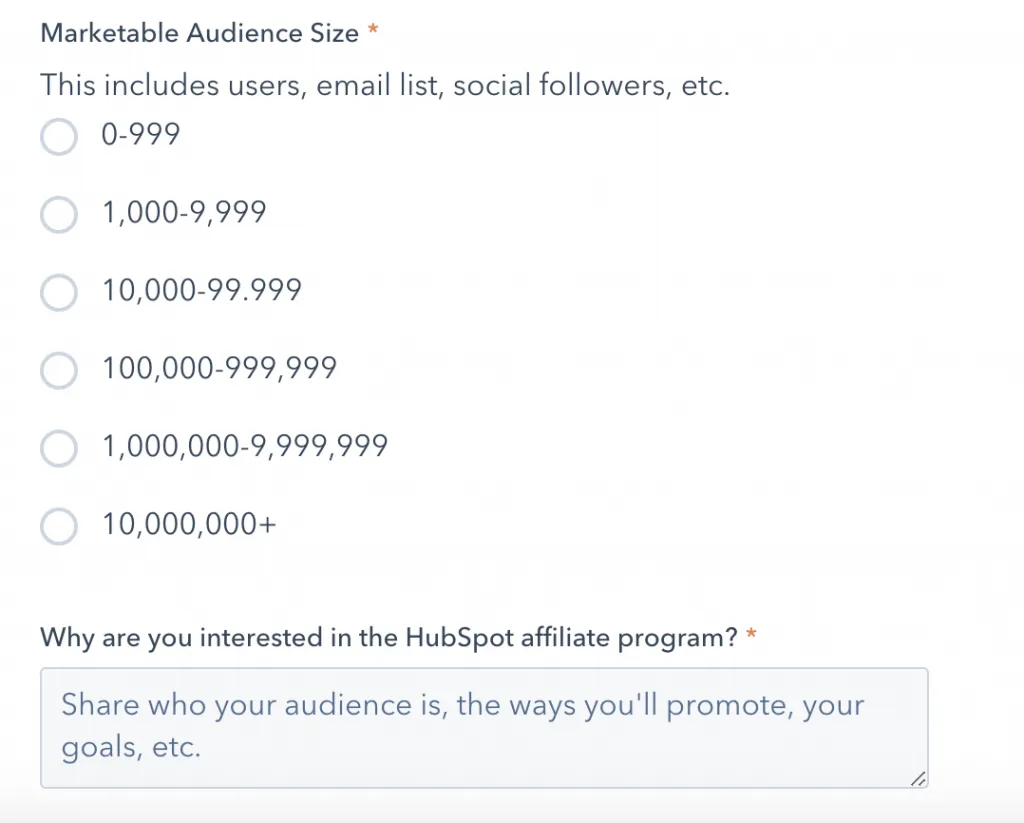
You’re essentially hiring affiliates to represent your brand well, so the more you know about them the better. Plus, if you’re open to new ideas and possibilities, it can help you form relationships with influencers who will be able to offer more valuable insights into the consumer experience. A well-rounded approach can go a long way in helping your affiliate marketing program reach its goals.
4 – Decide what metrics are most important to you
You can design your program to reward affiliates on the basis of pay-per-click, per-lead, per-sale, or other metric.
Think about what is the most high-value action that a customer can take in order to set themselves up for a long lifetime with your brand.
Depending on your product, the most valuable top-of-funnel conversion may not always be a purchase. You might be better off collecting leads that you can educate and nurture so that they’re set up for a successful sale down the road.
You may also want to consider giving bonuses for specific actions that your affiliates take, such as signing up a new customer or referring an additional partner. Be sure to track your results and keep refining your strategy to ensure the most successful outcomes.
At the end of the day, you’ll want to choose the metrics that best align with your business goals and reward those who bring the most value. With the right combination of metrics, incentives, and tracking tools, you can ensure that everyone gets their fair share of rewards for a job well done.
5 – Check out what your competition is doing
Because affiliate programs are widely known as ways to “make money while you sleep”, affiliates will only join your program if the benefit is clear. If your competitor is offering better compensation and more rewards, their program will be more appealing.
The general details of a brand’s affiliate programs are usually laid out on their website for the public to review, so there’s no excuse for creating an affiliate program that isn’t designed to compete.
Start by conducting a Google search for terms like “[competitor name] affiliate program”, “[competitor name] affiliate marketing” or [“competitor name] affiliate partner”. Keep in mind that terms like “referral” and “partner” may also be used to describe a brand’s affiliate program.
Remember that the specifics need to align with YOUR financial position. Don’t just offer a high commission to attract people and be forced to terminate the relationship later.
Evaluate the market, consider your industry and start creating a program that will bring high-quality affiliates to your brand. Good luck!
Once you have a better understanding of what’s currently available from your competition, it’s time to create an even better offer for potential affiliates. Earn a commission and strengthen the structure by offering higher payouts, more rewards and unique benefits.
Your goal is to create a program that gives affiliates incentives they can’t find anywhere else.
6 – Keep affiliates in the loop
While your relationship with an affiliate isn’t always close and personal, a trustworthy connection still needs to be maintained.
Just like an internal salesperson, affiliates won’t see any point in participating if they don’t feel like you value their efforts. Plus, when the average affiliate is working with multiple brands, they’ll only promote yours if you remain top-of-mind.
Keep them in the loop with a monthly newsletter that outlines new products, promotions, and any upcoming changes to the program, highlighting the top members of your program to drive motivation.
Your affiliates should also be the first to know when you’re running a contest or special offer. These are typically the best moments to share with your most important partners, so make sure they’re included in the conversation. You may even want to give them an exclusive “sneak peek” at what you have planned!
With any luck, your affiliates will feel more engaged and be more likely to promote your brand. After all, a satisfied affiliate is an advocate for your business!
Final Thoughts
By 2020, spending on affiliate marketing is expected to grow to $6.8 billion in the US alone. If your business is looking for a new way to reach customers, boost sales, and engage your top users, talk to us today.
To learn more about designing a successful loyalty strategy in the digital economy, sign up for the Digital Loyalty Academy today for free!

